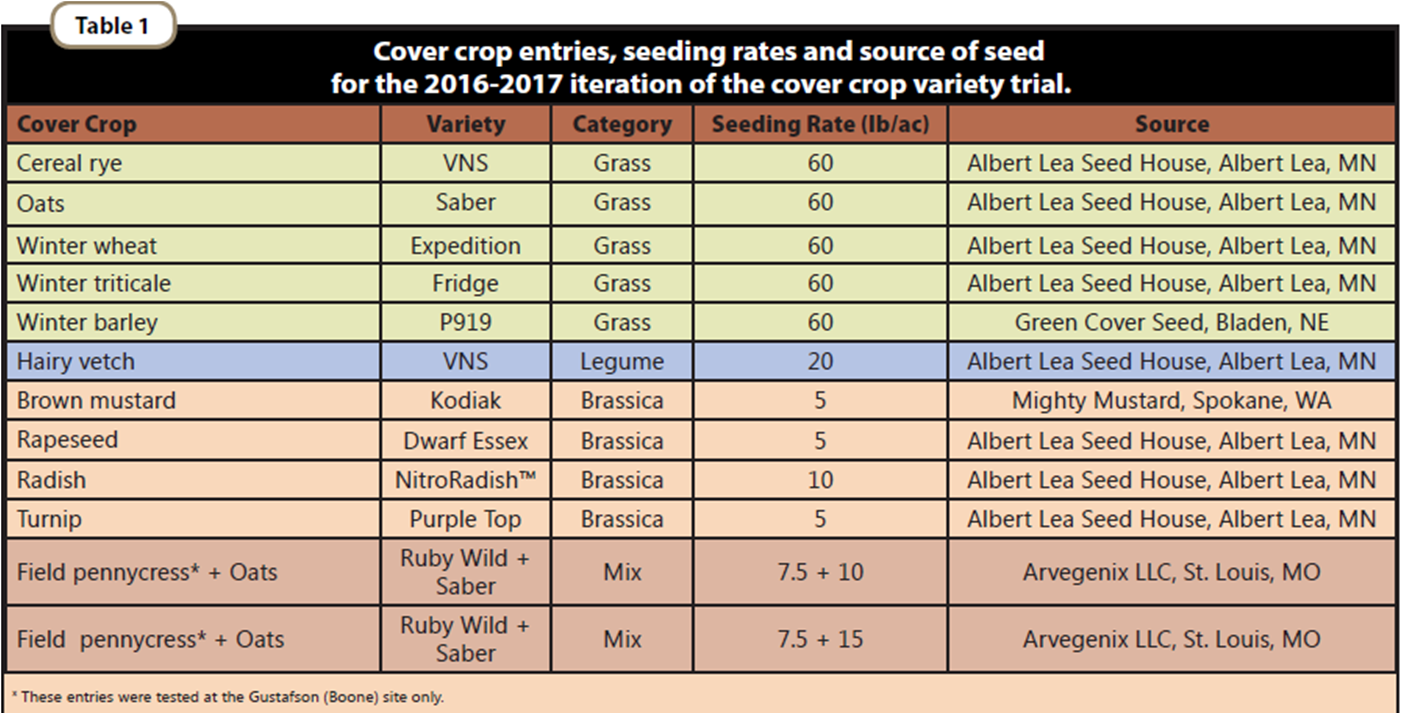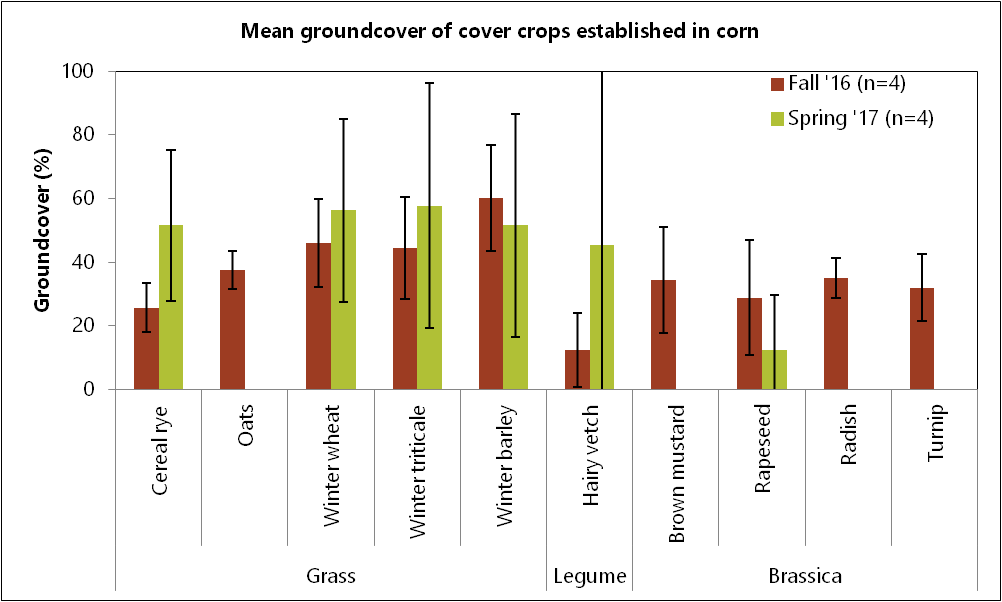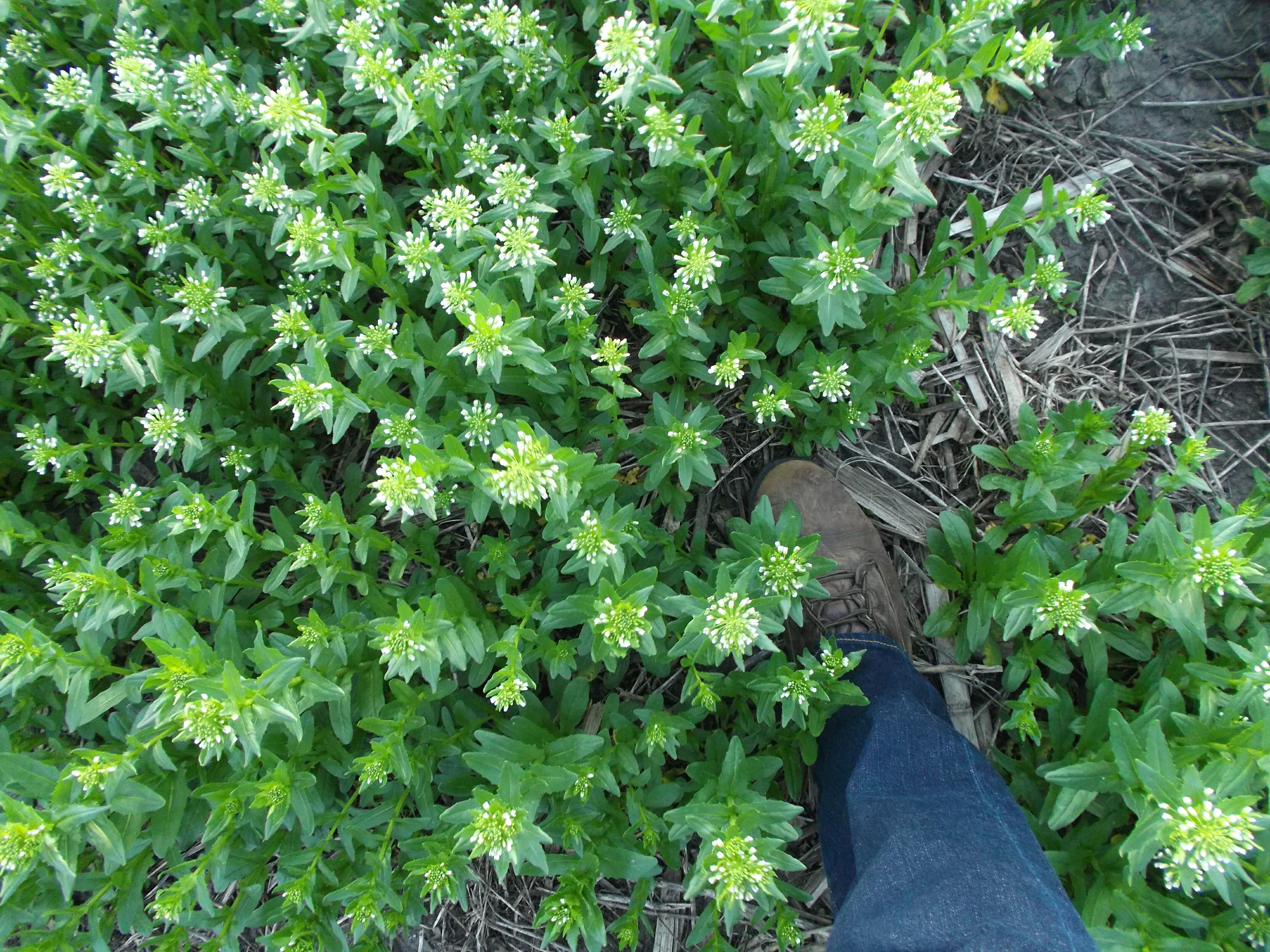RESEARCH REPORT: Cover Crop Variety Trial 2016-17
The fifth and final iteration of Practical Farmers’ Cover Crop Variety Trial has just been released: Cover Crop Variety Trial, 2016-2017.
As with the previous iterations, cooperators hand-seeded cover crops into small plots and assessed groundcover in the fall (prior to hard freeze) and the following spring (prior to termination). Cover crop entries studied in 2016-17 are shown in the table below. Read on to learn more about the recent iteration of the trial which was conducted by seven cooperators across the state.

Key Findings
- Cereal rye tended to be the most consistent cover crop providing both fall and spring groundcover across the locations.
- The other winter cereals (winter wheat, winter triticale, winter wheat) also did quite well.
- Brown mustard and oats are very strong candidates for “winterkill” cover crops that provide decent amounts of fall groundcover.
- We attribute the performance of hairy vetch and radish in the 2016-17 (and 2015-16) iteration(s) to mild fall and winter conditions. Establishing a legume cover crop (like hairy vetch) between soybean and corn in the Upper Midwest is typically very challenging.
See how the cover crops performed at each location (Boone, Randalia, Clearfield, Stanton, Crawfordsville, Rake, Spencer) in the research report. General trends across the sites are provided in the figures that follow.
Cover Crops Established in Standing Corn
Two cooperators established cover crops into standing corn in Fall 2016 (four replications total across the two locations). The figure below shows the fall and spring groundcover for all entries averaged across the two locations (Stanton, Crawfordsville).

Cover Crops Established in Standing Soybeans
Five cooperators established cover crops into standing soybeans in Fall 2016 (10 replications total across the five locations). The figure below shows the fall and spring groundcover for all entries averaged across the five locations (Boone, Randalia, Clearfield, Rake, Spencer).

At the Boone location, we also screened Field Pennycress as a cover crop. The pennycress was seeded with either 10 lb or 15 lb of oats as a companion. It really shined the following spring, though, with both seedings providing upwards of 80% groundcover by mid-April. Often considered a pesky weed, Field Pennycress does appear to be a consistent over-wintering, non-grass cover crop option.

Field Pennycress at Boone on Apr. 24, 2017.
Previous Iterations
Check out the previous four iterations of the Cover Crop Variety Trial below. Over the years, cereal rye was the most consistent cover crop; seeded either into standing corn or standing soybeans.
Cover Crop Variety Trial, 2015-2016
Cover Crop Variety Trial, 2014-2015
Cover Crop Variety Trial, 2013-2014
Cover Crop Variety Trial, 2012-2013
The 2016-17 Cover Crop Variety Trial was made possible by the Walton Family Foundation. We would also like to thank Albert Lea Seed House, Green Cover Seed, Arvegenix, LLC and Mighty Mustard for providing seed for this project.
View more PFI Research Reports. For more information about this study and other studies as part of PFI’s Cooperators’ Program, contact Stefan Gailans at stefan@practical farmers.org.
